 [At an indoor photographica yard sale that followed the RIT-sponsored conference in April of this year, I came across a copy of Tom Dugan’s 1979 book Photography Between Covers. Consisting of interviews with photographers of the period heavily involved in producing photography books, as well as people otherwise involved with them (publisher David Godine, printer Sid Rapoport), it includes a conversation with me that Dugan taped in February 1978 and transcribed.
[At an indoor photographica yard sale that followed the RIT-sponsored conference in April of this year, I came across a copy of Tom Dugan’s 1979 book Photography Between Covers. Consisting of interviews with photographers of the period heavily involved in producing photography books, as well as people otherwise involved with them (publisher David Godine, printer Sid Rapoport), it includes a conversation with me that Dugan taped in February 1978 and transcribed.
The copy I found — ex-library, with the usual markings, missing its cover, but otherwise intact — cost only a few dollars, so I snagged it. Through the miracles of computerization I scanned the pages of that interview, put them through an OCR program, and ended up with the digitized version whose first section appears below.
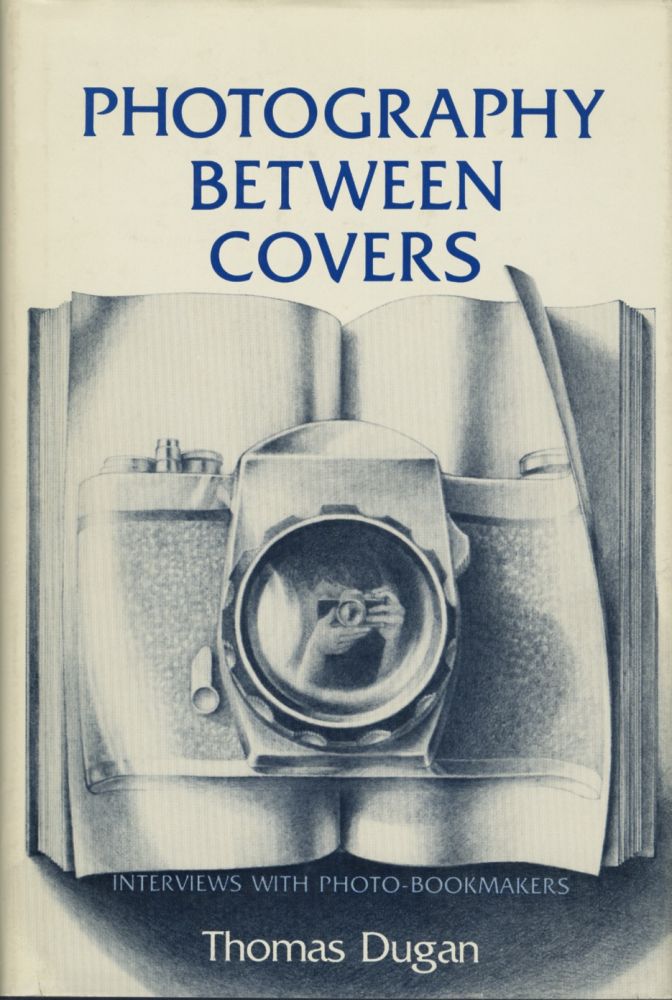 Various factors, including the emergence of print-on-demand (POD) technologies and the ebook format, have already transformed photo-book publishing in radical ways, and promise to do so even more in the near future. (See Frank Cost’s recent Guest Post on this subject.) So this dialogue qualifies as a period piece, a time capsule — like Dugan’s entire book, which I recommend highly — some of whose premises, inevitably, would come to seem quaintly archaic thirty years later.
Various factors, including the emergence of print-on-demand (POD) technologies and the ebook format, have already transformed photo-book publishing in radical ways, and promise to do so even more in the near future. (See Frank Cost’s recent Guest Post on this subject.) So this dialogue qualifies as a period piece, a time capsule — like Dugan’s entire book, which I recommend highly — some of whose premises, inevitably, would come to seem quaintly archaic thirty years later.
Yet the underlying assumptions about edition sizing, production values, pricing, marketing strategies and such seem to me to still hold, with some adjustments for inflation. And the paucity of photo-book reviewers, along with the limited platforms for such commentary, that I bemoaned then have only gotten even worse over the intervening decades.
In any case, here’s the interview as published, to which I’ve added a few notes and made just a few minor grammatical and punctuation corrections. Part 1 appears below; the succeeding three parts will follow shortly. — A.D.C.]
•
Tom Dugan: Interview with A. D. Coleman, February 14, 1978 (1)
On a cold, snowbound St. Valentine’s day, February 14, 1978, I interviewed Allan Coleman in his home on Staten Island, N.Y. When I arrived, Allan had just put his son to bed and we sat for an hour over coffee before beginning our conversation. The interview, which was tape-recorded, was conducted in front of his living room fireplace and continued well into the night. Allan speaks from a unique position. He is, first and foremost, a critic, but additionally, a bookmaker and publisher, as he privately printed two of the three books he has done.[1] He is a man committed to the book as the most viable medium for the dissemination of photography. — Tom Dugan
•
Tom Dugan: What is the role of the critic in reference to the picture book?
Allan Coleman: In the case of the material that’s self-published, or published by small presses, whether they’re small university presses or small independent presses or presses that don’t have well-established distribution systems, I think that the critic’s role is a very essential role because, in many cases, the books simply will not come to the attention of the audience, of the market for them, without a critical intermediary.
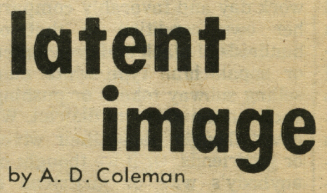 I know that when I first started writing for the Village Voice, in 1968, there was virtually no place where photography books were being regularly reviewed, at least no place in New York, and not really in any other publication that I knew of. And I tried very much to make that column,[2] and the column I was writing for the New York Times also,[3] a place where, in one way or another, in one context or another, as much of what was coming out as possible would be discussed or referred to or incorporated in some way. But, sometime around 1971, 1972, not very long before I stopped writing for the Voice and the Times, the amount of material coming out had become so voluminous that after a certain period of craziness and one-armed-paperhanger behavior in relationship to it, I realized it was no longer possible for any single critic to cover all the books which were coming out.
I know that when I first started writing for the Village Voice, in 1968, there was virtually no place where photography books were being regularly reviewed, at least no place in New York, and not really in any other publication that I knew of. And I tried very much to make that column,[2] and the column I was writing for the New York Times also,[3] a place where, in one way or another, in one context or another, as much of what was coming out as possible would be discussed or referred to or incorporated in some way. But, sometime around 1971, 1972, not very long before I stopped writing for the Voice and the Times, the amount of material coming out had become so voluminous that after a certain period of craziness and one-armed-paperhanger behavior in relationship to it, I realized it was no longer possible for any single critic to cover all the books which were coming out.
That in itself is a concurrent problem. There’s a shortage of places and vehicles in which to talk about the books. There is an increasing amount of material coming out, much of it — although the actual reproduction quality and the bookmaking quality is very high — I don’t think the imagery is of extraordinary importance, and I’m not sure that it deserves the permanence of book form, or the permanence of book form in an expensive, difficult-to-market, large edition.
It’s a difficult problem the critic is always dealing with as this material comes in: How significant is the work? How hard is it going to be for the work to reach its audience without your particular review of it? Is the work really strong and durable? How big is the actual market for the work as opposed to the size of the edition? I see a lot of work coming out that will not sell anywhere near the number of copies which are printed. It doesn’t mean they’re bad books, it just means that the person who made them may have overestimated the audience. It’s a very complex situation. What we really need is a sort of New York Review of Photography Books,[4] some kind of publication that concentrates specifically on the literature of photography in the sense of the books.
And also something that hasn’t happened, and it’s a problem I’m trying to work on in my head because I’d like to help solve it, is there has not yet been what I think is the essential breakthrough past the photography audience to the general public for visual books generally, and photography books specifically.
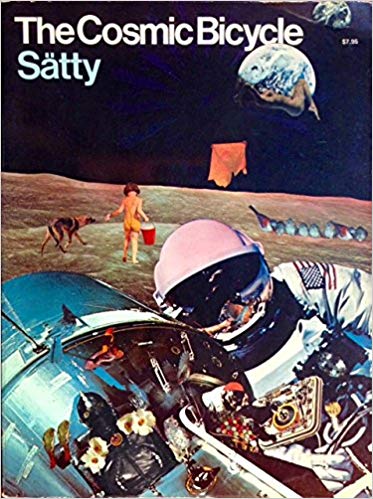 A book like The Cosmic Bicycle by Satty[5] might sell ten, twelve thousand copies. A book that just came out on record-album jackets will probably sell twenty-five to thirty thousand copies. As far as I understand the nature of the market for those books, it’s what I would assume would be the market for a lot of the best photography books. They’re primarily young people, visually attuned, people who came through certain kinds of experiences in the sixties which opened them up, both drug experiences and creative experiences which opened them up to certain kinds of psychedelic fantasy imagery, to certain kinds of bizarre photography, but who won’t, for some reason, come across Duane Michals’s Take One and See Mount Fujiyama, just as a random example, or won’t come across Ralph Gibson’s trilogy.
A book like The Cosmic Bicycle by Satty[5] might sell ten, twelve thousand copies. A book that just came out on record-album jackets will probably sell twenty-five to thirty thousand copies. As far as I understand the nature of the market for those books, it’s what I would assume would be the market for a lot of the best photography books. They’re primarily young people, visually attuned, people who came through certain kinds of experiences in the sixties which opened them up, both drug experiences and creative experiences which opened them up to certain kinds of psychedelic fantasy imagery, to certain kinds of bizarre photography, but who won’t, for some reason, come across Duane Michals’s Take One and See Mount Fujiyama, just as a random example, or won’t come across Ralph Gibson’s trilogy.
And the main reason that they won’t come across it is that it won’t ever be presented to them in a context with those other books. It won’t be presented to them in Rolling Stone [magazine]; it won’t be presented to them in whatever other magazines they might be reading. And I don’t know why. I don’t know what the access route is to get those books to that market. I think that that’s the key. If photography books are to become really viable as products, without meaning as “merchandise,” if they’re to be able to be self-sustaining as a produced artifact, they’ve got to go beyond the market in photography.
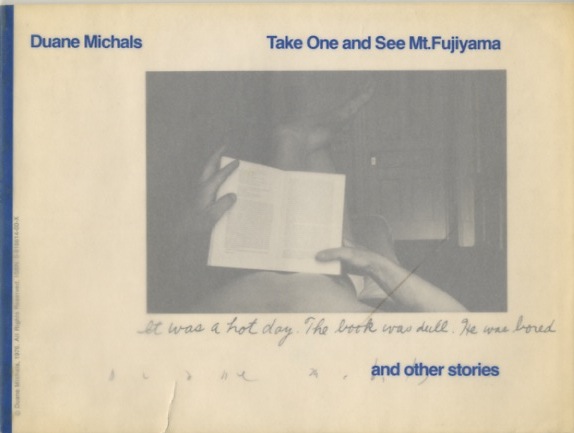 In photography there are now hundreds and hundreds of books competing against each other for a fairly limited amount of money, if you’re talking about the audience of people who are knowledgeable in photography. There’s got to come a point where, not that they’ve got to be sold in supermarkets, but where you’ve got to be able to walk into Scribner’s bookstore and some other bookstores outside of Greenwich Village (but in New York City) and find a display of 20 to 30 visual books, at a reasonable price, that people are going to pick up and take home with them. I don’t know how to make that connection. I’ve been looking for it for a long time.
In photography there are now hundreds and hundreds of books competing against each other for a fairly limited amount of money, if you’re talking about the audience of people who are knowledgeable in photography. There’s got to come a point where, not that they’ve got to be sold in supermarkets, but where you’ve got to be able to walk into Scribner’s bookstore and some other bookstores outside of Greenwich Village (but in New York City) and find a display of 20 to 30 visual books, at a reasonable price, that people are going to pick up and take home with them. I don’t know how to make that connection. I’ve been looking for it for a long time.
TD: If visual books were dealt with as seriously by the New York Times and The New York Review of Books as poetry is dealt with, whereby visual books were discussed as though a book is read as fiction or poetry is read, and is not simply a collection of disparate images, I think there would be an audience. It doesn’t seem to me to have proven out that photographers are interested in other photographers’ work or buy other photographers’ work. I think that’s a common fallacy and assumption that people selling books perpetuate. I don’t think photographers are the audience.
ADC: That’s partly true. However, I found, writing for the Times and the Village Voice what I thought was commentary that dealt with books beyond just the fact that they were collections of images, but tried to actually deal with them as books, as organized, coherent statements, when they were, at any rate; people would call and tell me they were delighted with the wonderful review and, as a result of the review, they got three orders for the books. I was never able to establish any kind of meaningful correlation between a review that I gave a book, either positive or negative, and its sales on any significant level.
Photography books are under-advertised; we haven’t, as a general rule, within photography, really done much in terms of publicizing photography books, other than through the specifically photography press. You don’t see people going on television; you don’t see people going on the talk shows with their books. We haven’t really found ways yet of really talking effectively about images, and about photography books, to an audience that doesn’t have the book in front of them.
It’s a real problem. I was recently on a very early morning show on [non-commercial, listener-supported radio station] WBAI talking about The Grotesque in Photography and, at a certain point, we had a lot of time, so we decided there were probably a lot of people out there and we should try and describe the images. This is an incredible task, in that context — conversation — not even a written context. We were trying to describe what a Jerry Uelsmann photograph appears like to someone who might never have encountered a Jerry Uelsmann. It’s a very bizarre experience.
My experience with that book, peculiarly, is that it’s had no advertising at all. It’s had no advertising because apparently it is common practice in trade publishing of paperback books, unless it’s something that’s assumed is going to be a best-seller, where there will be a push behind it, that it’s cast out upon the water, cold. Your investment in it up through production and distribution is all you sink into it. You throw it out there; it sinks or swims. It finds it own space on the shelf, as they say, or it doesn’t. If it sinks, so be it. They don’t throw good money after bad. If it surfaces and survives for long enough, then maybe they will start putting some publicity push behind it.
The book has had no reviews that I know of except one totally negative review in the Village Voice,[6] a full-page hostile pan — but full-page in the Village Voice, nonetheless, which couldn’t hurt, in some ways. Nevertheless, I presume just on the basis of its cover, probably predominantly, because that’s what would make someone go to it who didn’t know that it existed — nobody has any reason to know this book exists is what I’m saying, except for its presence; which manifests itself by a cover which is a fairly dramatic cover in this case. Then whatever impact the images have — they’ve sold over one-fourth of their first paperback printing and about a third of their hardbound printing, in maybe four months, which I find very exciting. It means the book sells to people who probably didn’t know it existed before they hit it on the book shelf, which is good.
I set out to make a book which would sell. There were going to be fifteen thousand copies printed, and it was not my fantasy that it should be remaindered at Marboro [bookstore[7]] for ten years. I would like to get those copies out there now. It’s been interesting to watch the process from that end and to realize that the only review it received has been the negative review, and yet it’s selling well. So there’s no correlation there either, to any kind of critical response to the book.
I feel very ambivalent about it. What seems to be selling this book — aside from its contents, which I’m sure people look through before they buy — is its cover, which attracts them to it, and the fact that there’s an excellent distribution system behind it. What I’ve heard from people I know around the country is that they’ve seen it in bookstores all over. Those seem to be the key factors. Shelf exposure, something eye-catching about the cover, and solid distribution. It’s quite conceivable to me that the book could be panned by every reviewer who sees it, and yet sell very well.
I certainly never assumed that the positive reviews that I wrote ever made or broke a book or a photographer. Sometimes I’d see things that I’d said in reviews excerpted in advertising for books. I don’t know what effect that had, if any. …
(To be continued.)
•
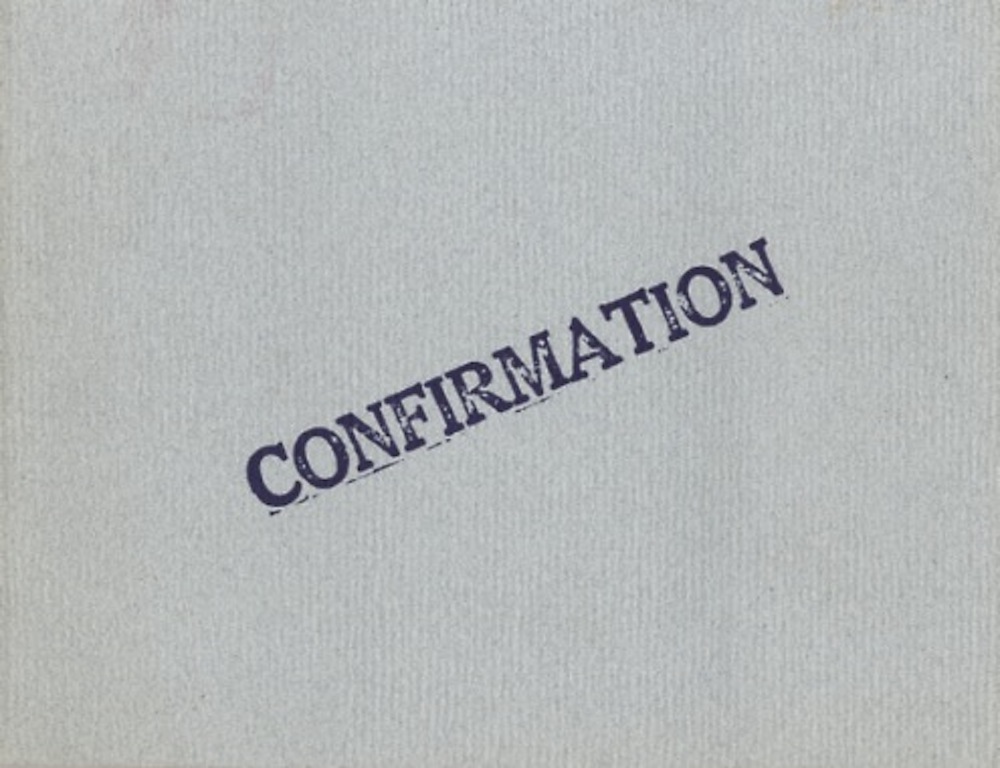 [1] At that juncture I had self-published two artist’s books, Carbon Copy (1973) and Confirmation (1975). And my first book of critical writing, The Grotesque in Photography, had appeared the previous year.
[1] At that juncture I had self-published two artist’s books, Carbon Copy (1973) and Confirmation (1975). And my first book of critical writing, The Grotesque in Photography, had appeared the previous year.
[2] Under the rubric “Latent Image,” that column ran from June 1968 through March 1973.
[3] This column ran from March 1970 through November 1974.
[4] The analogy here is to the New York Review of Books.
[5] W. Satty, The Cosmic Bicycle (San Francisco: Straight Arrow Books, 1971). This is a book of photocollages.
[6] This interview took place February 14, 1978. Mr. Coleman has informed me that there have been a number of reviews since. — T. D.
[7] Marboro was one of several bookstore chains that specialized in “remaindered” books — publishers’ overstock, sold to these chains for pennies on the dollar of list price, sold by the chains to the public at steep discount. Starting in the 1960s, books sometimes got remaindered with six months of their original publication.
•
 Special offer: If you want me to either continue pursuing a particular subject or give you a break and (for one post) write on a topic — my choice — other than the current main story, make a donation of $50 via the PayPal widget below, indicating your preference in a note accompanying your donation. I’ll credit you as that new post’s sponsor, and link to a website of your choosing. Include a note with your snail-mail address (or email it to me separately) for a free signed copy of my 1995 book Critical Focus!
Special offer: If you want me to either continue pursuing a particular subject or give you a break and (for one post) write on a topic — my choice — other than the current main story, make a donation of $50 via the PayPal widget below, indicating your preference in a note accompanying your donation. I’ll credit you as that new post’s sponsor, and link to a website of your choosing. Include a note with your snail-mail address (or email it to me separately) for a free signed copy of my 1995 book Critical Focus!
 But wait! There’s more! Donate now and I’ll include a copy of The Silent Strength of Liu Xia, the catalog of the 2012-13 touring exhibition of photos by the dissident Chinese photographer, artist, and poet, currently in her sixth year of extralegal house arrest in Beijing. The only publication of her photographic work, it includes all 26 images in the exhibition, plus another 14 from the same series, along with essays by Guy Sorman, Andrew Nathan, and Cui Weiping, professor at the Beijing Film Academy.
But wait! There’s more! Donate now and I’ll include a copy of The Silent Strength of Liu Xia, the catalog of the 2012-13 touring exhibition of photos by the dissident Chinese photographer, artist, and poet, currently in her sixth year of extralegal house arrest in Beijing. The only publication of her photographic work, it includes all 26 images in the exhibition, plus another 14 from the same series, along with essays by Guy Sorman, Andrew Nathan, and Cui Weiping, professor at the Beijing Film Academy.


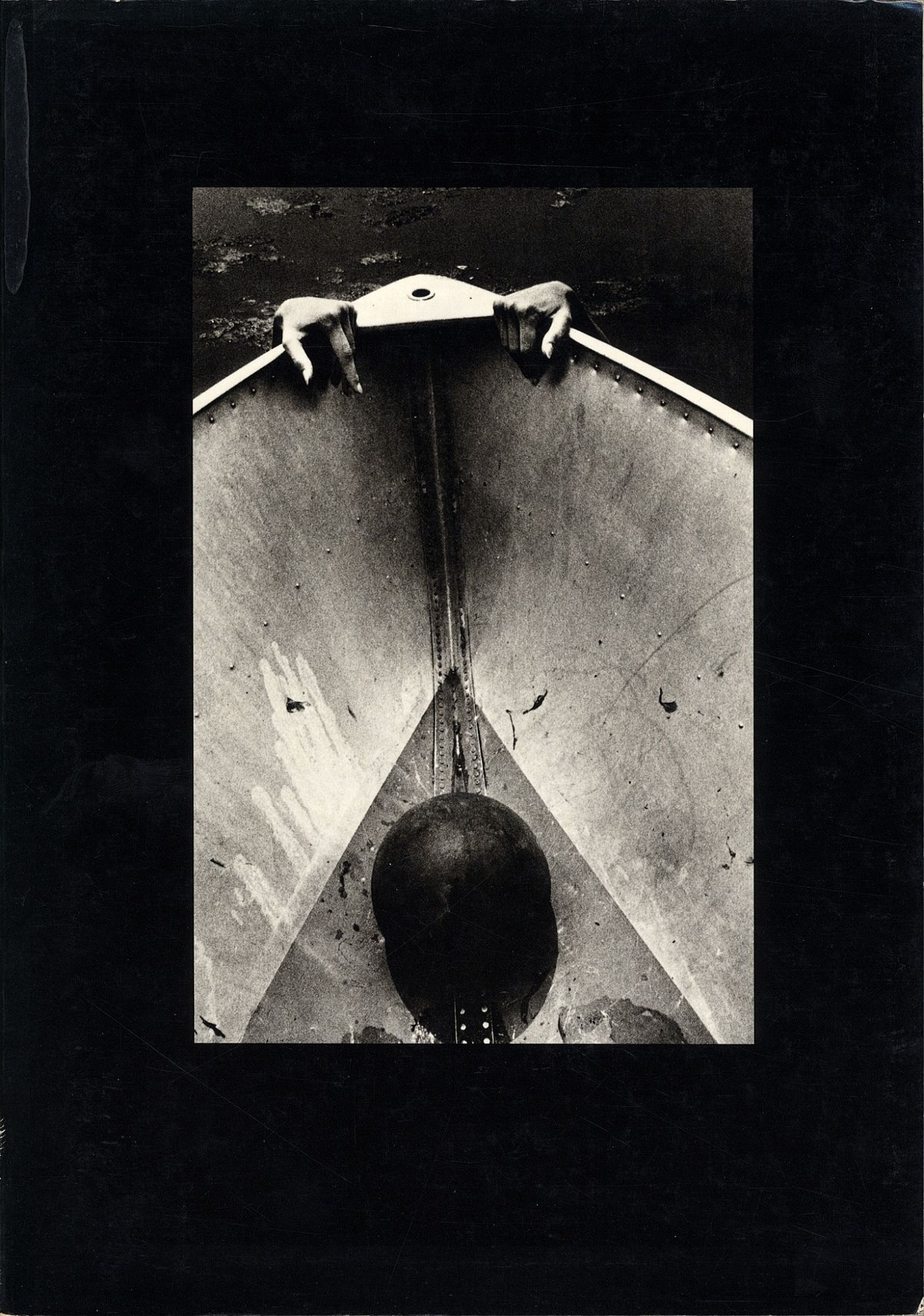
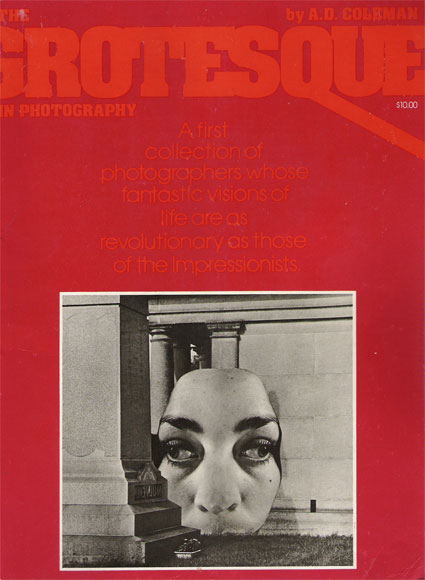




Leave a Comment